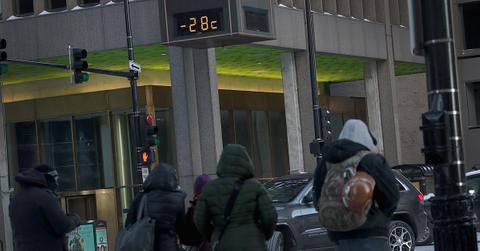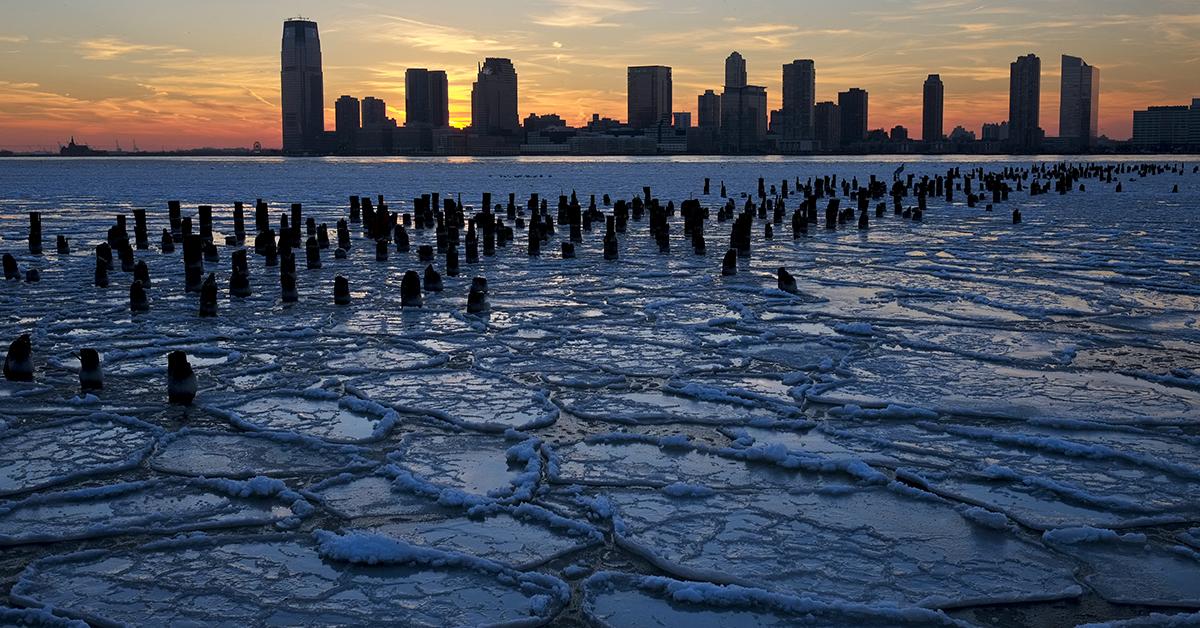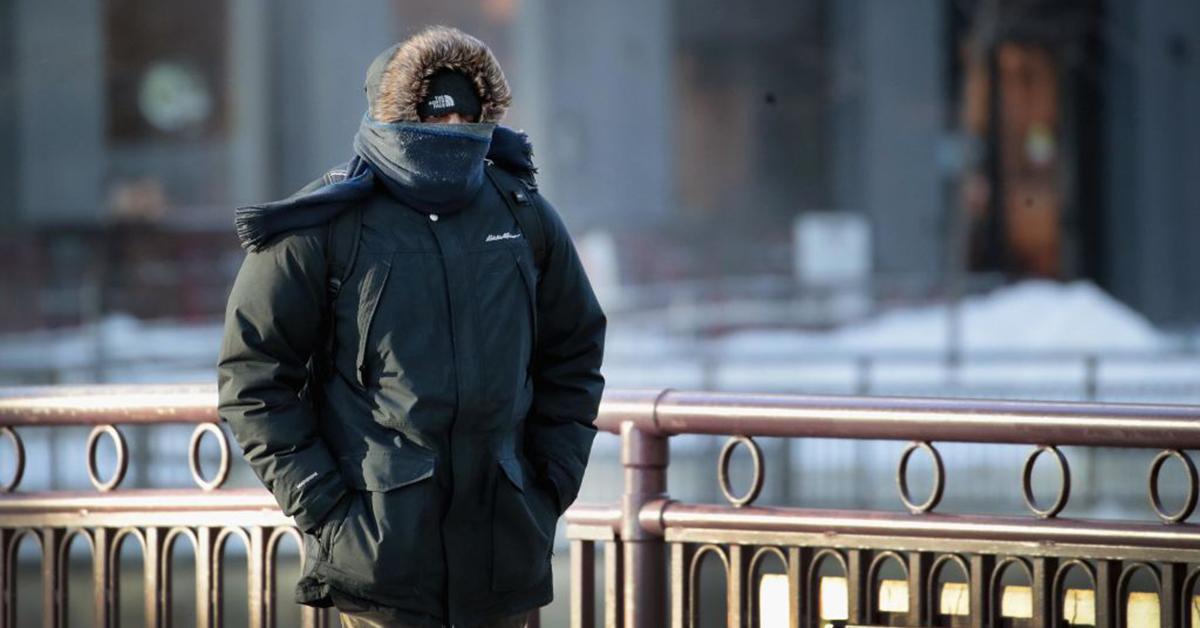What Causes a Polar Vortex?
Find out what causes a polar vortex, and how you can properly prepare for it.
Updated Jan. 30 2019, 12:57 p.m. ET

No matter where you’re currently living, if you’re in the United States, chances are you’ve heard a lot about polar vortices recently; the midwest has been impacted the most by this climate phenomenon — with temperatures dropping to the lowest levels in more than two decades (at Chicago’s O’Hare Airport, the weather dipped down to minus 23 degrees Fahrenheit in the early hours of this morning, just slightly warmer than their lowest recorded temperature of minus 27 degrees, recorded 34 years ago, The Weather Channel reported).
With all the coverage on the icy cold temperatures, there’s a lot of information (and plenty of misinformation) about what a polar vortex even is. Keep reading to find out everything you need to know about this weather phenomenon.
What Is a Polar Vortex?
This dangerous (and now deadly) drop in temperature is the result of a polar vortex — but what even is a polar vortex? According to the National Weather Service, “The polar vortex is a large area of low pressure and cold air surrounding both of the Earth’s poles. It ALWAYS exists near the poles, but weakens in the summer and strengthens in the winter. The term ‘vortex’ refers to the counterclockwise flow of air that helps keep the colder air near the Poles. Many times during winter in the northern hemisphere, the polar vortex will expand, sending cold air southward with the jet stream. This occurs fairly regularly during wintertime and is often associated with large outbreaks of Arctic air in the United States.” In simpler terms, this is a low-pressure system that locks in bitter cold air from the arctic; when the vortex becomes distorted — like it currently is — it can dip much further south into the Northern Hemisphere than you’d expect to find it, bringing its icy temperatures and brutal wind along with it.
Because the polar vortex isn’t a single storm — like a hurricane or tornado — the effects can last much longer and be much more widely spread than a single storm. The last time the United States was hit with a polar vortex was in 2014 — and the record-breaking temperatures started in January, and continued well into March.

The 2014 Polar Vortex, as seen in New York City.
What Causes a Polar Vortex?
As the National Weather Service explained, polar vortices always exist — year-round — in the poles; the problem arises when the system distorts and brings the arctic temperatures further south than it would normally be found. As CNN explained, “The upper-level winds that make up the polar vortex change in intensity from time to time. When those winds decrease significantly, it can allow the vortex to become distorted, and the result is a jet stream that plunges deep into southern latitudes, bringing the cold, dense Arctic air spilling down with it. This oscillation is known as the Arctic Oscillation and it can switch from a positive phase to negative phase a few times per year. This oscillation — namely the negative phase where the polar winds are weaker — tends to lead to major cold air outbreaks in one or more regions of the planet.”
Is the Polar Vortex Related to Climate Change?
While it doesn’t exactly sound like it makes sense, the extreme cold temperatures that come with a polar vortex are related to global warming; as the average temperature increases, we see more extremes in temperature — such as cold snaps in the winter and heat waves in the summer. These extremes also affect how the vortex can distort, and bring extreme temperatures south.
As Starts With A Bang’s Ethan Siegel explained in Forbes, “You’ll typically find a large mass of cold, dense air surrounding each of the poles. Normally, these vortices are stable enough, as temperature and pressure differences are severe enough, to keep them in place throughout the year. When the vortices are at their strongest, you get a single cell, and the air is extremely well-confined. When the vortices weaken, they can break up into two or more cells, and begin to migrate away from the poles. When they’re extremely weak, they can fragment, and some of that low pressure, low temperature air can begin to interact with the higher pressure, higher temperature air from outside the polar regions.”

He continued, adding that when the vortex at the north pole becomes very weak, the high pressure zones in the middle latitudes of Each can push towards the poles, displacing the cold air. When the cold, dry air from the poles meets the warm, moist air from the mid-latitudes, people experience a cold snap — what’s currently happening in the midwest. And it’s all related to global warming, as counterintuitive as it may sound.
“Because the phenomenon that causes the polar vortex to break down is known as the sudden stratospheric warming, where the upper layers of the atmosphere increase in temperature by approximately 30-50 degrees Celsius over the span of only a few days,” he wrote. “The fact that there are land masses located where they are in the Northern Hemisphere means that as those land temperatures increase, they transport their heat to even more northern latitudes… Warmer land temperatures, particularly in northern North America and northern Eurasia, allow more heat to be transported into the Arctic stratosphere. A warmer Earth makes sudden stratospheric warming events more frequent.”
How Do You Prepare for a Polar Vortex?
If you’re in the midwest, hopefully you’re already set at home, and don’t have any plans to go outside if you could avoid it. The negative temperatures aren’t just uncomfortable — they can also be seriously problematic for your health, and maybe even deadly (at least six people are believed to have died already as a result of the temperature drops).
As emergency room doctor John Torres advised to NBC News, it’s crucial to dress properly (several, light-weight loose layers is better than one heavy item, and it’s important to wear mittens, hats, and a scarf to cover your mouth/nose to protect your lungs). It’s also important to stay hydrated and avoid alcohol, no matter how tempting it is to warm your body from the inside out. It's also important to be aware of the signs of frostbite and hypothermia.
In addition to your own personal health, there are also several steps you can take to make sure that your home and car are adequately prepared to handle the sub-zero temperatures, such as draining your outdoor hoses and insulating your pipes at home.
Stay warm — and stay safe!